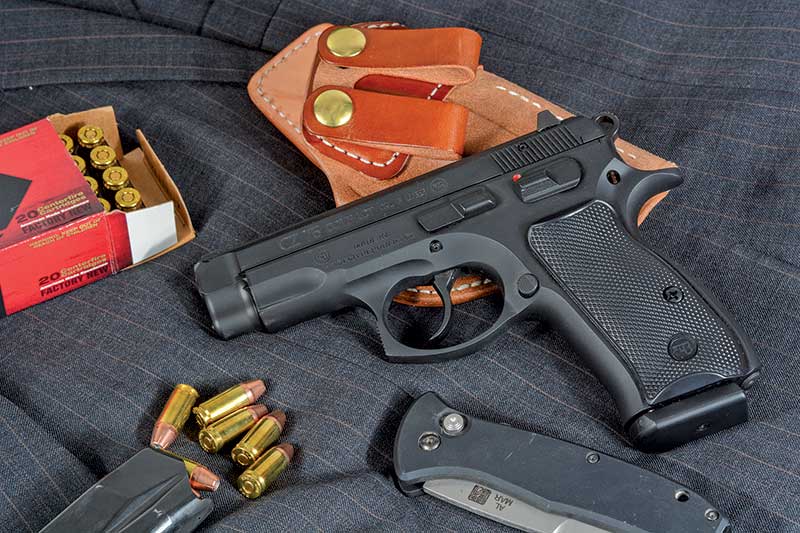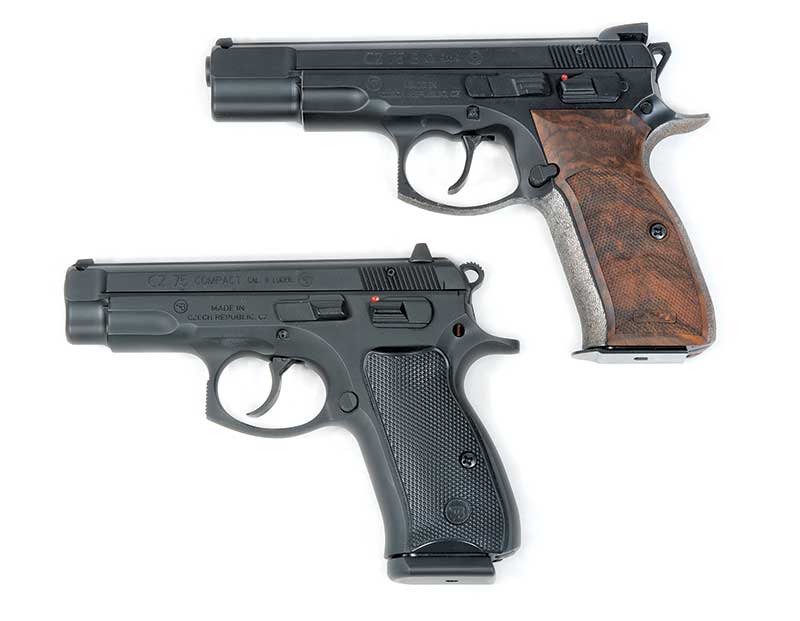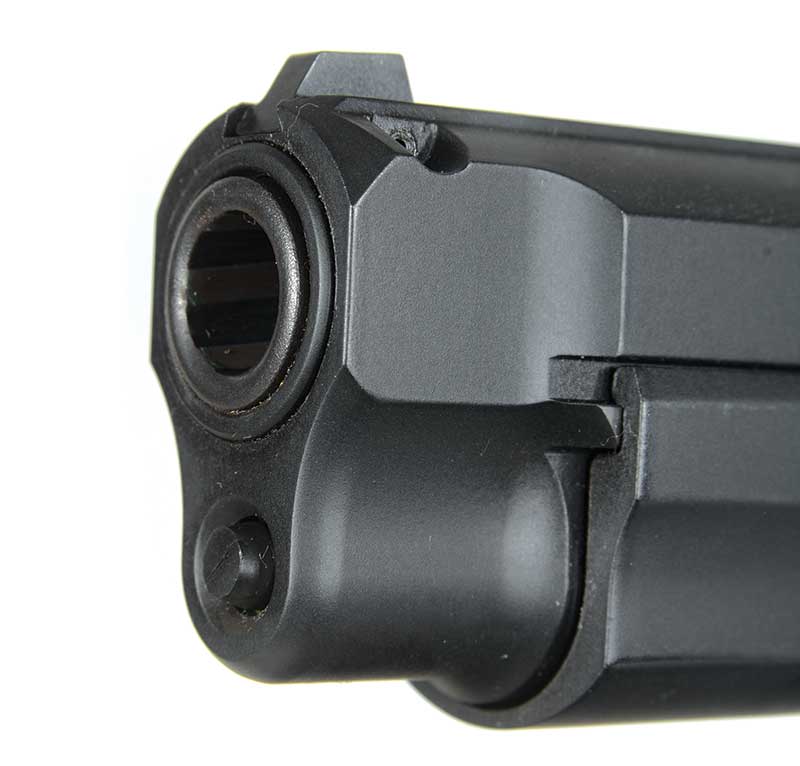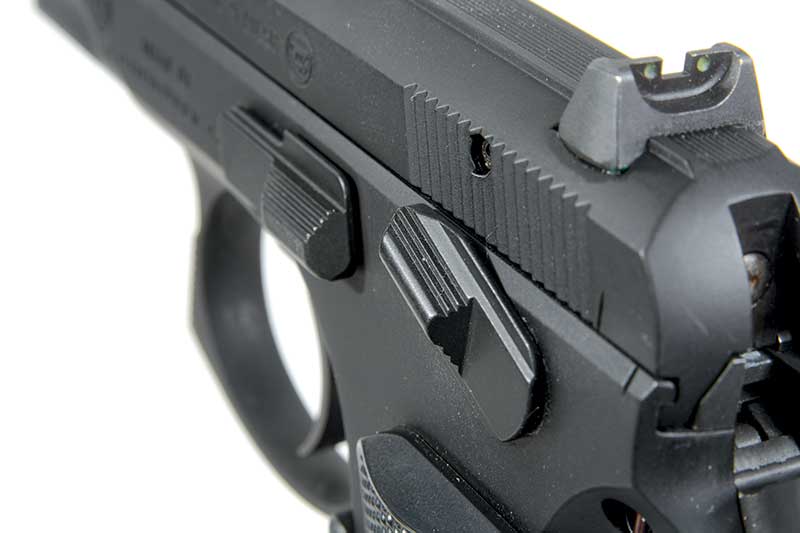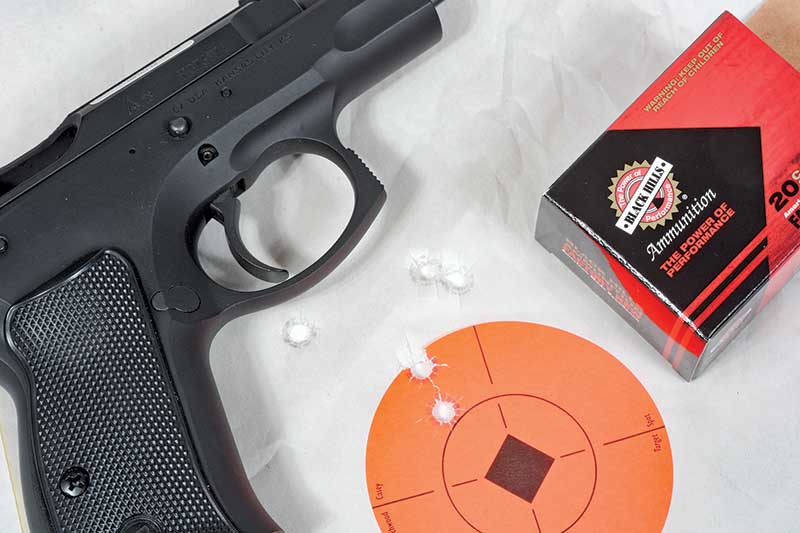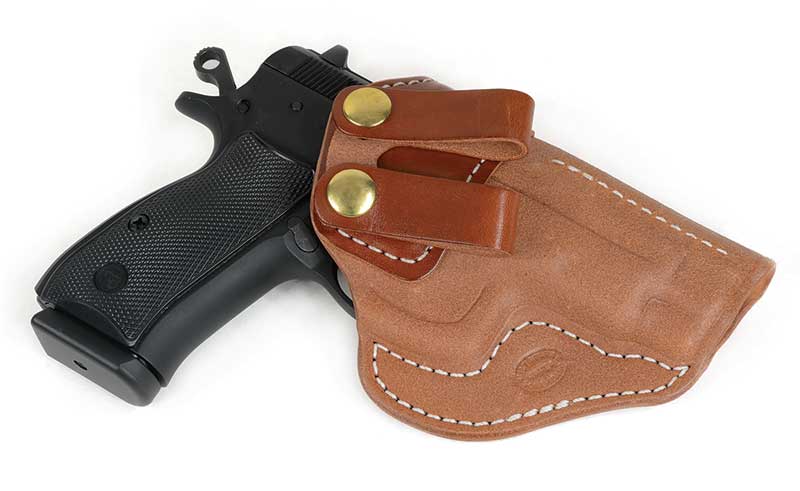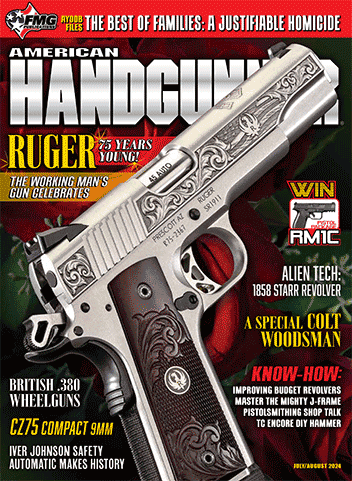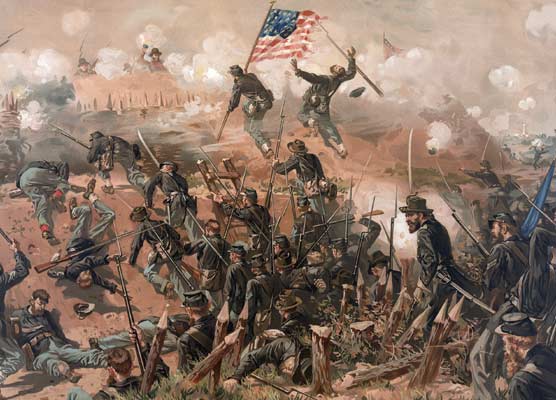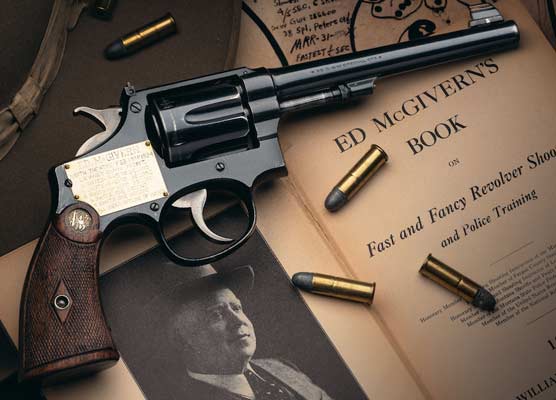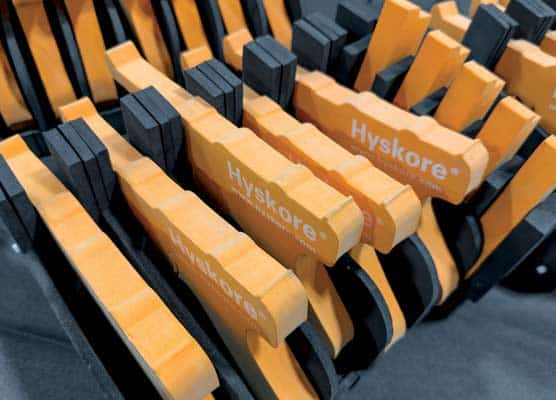A Little Off the Top
The CZ75 Compact 9mm
If you’re into the classic stuff, the only thing cooler than a proven service pistol is a slightly smaller version better equipped for concealed carry. The CZ75 9mm is a Cold War icon, a stark departure from the largely graceless Czech holster guns that prefigured it. There was a long embargo between its introduction in 1975 and the fall of the Iron Curtain 15 years later when they could finally be imported into the U.S.
Meanwhile, the Beretta 92, Browning Hi-Power and GLOCK were firming up their position in the U.S. market while the ’75 remained somewhat of a mythical beast. CZ has certainly come into more prominence over the past decade or so (especially with its exceptional competition pistols), but this late entry probably accounts for why some of us consider them the most underrated gun company in the world.
The CZ75’s most prominent traits are shared with the other truly great defensive pistols: surprising accuracy, monotonous reliability and good ergonomics. A bit of a best-of gun, the ’75 combined the magazine and barrel lockup of the Browning Hi-Power with the recessed slide rails of the SIG P210 (the slide runs inside the frame rather than on top of it) and the double action feature of the Walther P38, only with a manual safety instead of a decocker so the gun can be carried DA with the hammer down or cocked-and-locked, a la the 1911. As I said, best-of and broadly issued and copied worldwide.
Originally equipped with a spur hammer and rounded triggerguard, the CZ75 morphed into the CZ75B in the early 1990s with the addition of a rounded hammer, firing pin safety and then-chic squared triggerguard, and it is this version that serves as the basis of the Compact.c
Compacting The CZ75
The ideal compact pistol carries like a little gun and shoots like a big one, and to get there, the CZ75 Compact follows the traditional formula of removing a bit of barrel and a little bit of butt while still retaining the gun’s general proportions, much along the lines of the GLOCK 19 or Colt CCO.
Normally, there’s a price to be paid in terms of practical accuracy due to the shorter sight radius and capacity since there’s less room for ammo and enhanced recoil due to the weight reduction. On this last count, there’s little to worry about: The steel-framed CZ75 Compact shaves only some 3½ oz. off the weight of the full-size. For those of us used to concealing big steel guns, that’s an acceptable tradeoff for better shootability, but if you’re looking for something lighter, CZ also catalogs two alloy-framed versions, the CZ75 D PCR and rail-equipped P-01. Both are de-cocker-only and weigh nearly a half-pound less than the steel gun.
Compact Features
The Compact comes with two 15-round magazines, losing only a single cartridge in capacity compared to its full-size brother. This is partially due to the 0.320″ thick plastic base pad on the magazine, which wraps around a length of mag tube, that hangs below the grip. If you’re dead set on rapping along with Nate Dogg that you’ve got 16 in the clip and one in the hole, stick a full-size mag in it.
The Hi-Power feels svelte, the CZ75 hand-filling. Part of this is because the slide rail arrangement requires the frame to be wider than on other pistols, and the remainder is due to the heavily contoured plastic grip panels and the matching swell at the base of the front strap. CZ mercifully left this in place on the Compact rather than simply shortening the full-size frame from the bottom, which would have eliminated it. I have average size hands but tend to grip pistols very high, which leaves some butt hanging out below my fist with the full-size. The grip length of the Compact, however, seems perfect.
Sights are of the three-dot variety, with a fixed rear, as I prefer on a carry gun. The double action trigger is smooth, and the single action broke at an average 5 lbs., 3½ oz. on my Lyman digital gauge. Handling it alongside my CZ75B, which has the simplified Omega lockwork, the pull seemed both shorter and a bit heavier. Both triggers had a smooth roll in single action, unlike the glass rod break most of us expect from a 1911. Unlike the Omega, the safety cannot be applied if the hammer is at half-cock: It has to be all the way back.
Since this is a carry gun, I sought out carry leather for it: Milt Sparks provided one of its excellent Summer Specials inside the waistband holsters. Often (shall we say sincerely flattered?) by other makers, the Summer Special is one of the original IWBs and still one of the best, with a stitched-in sight track and rough-side-out finish to keep it firmly in place and stiff enough to easily reholster. I recently spent several days at Gunsite wearing one, and it was both comfortable and fast.
Range Performance
As is my usual practice, I didn’t clean or oil the Compact throughout the test. The gun consumed 490 rounds of factory ammo, 150 of which was the lipstick-like Federal Syntech ball. The rest was defensive ammo provided by Black Hills, including 115-grain jacketed hollow point (JHP), 125-grain HoneyBadger and 124-grain +P JHP, the load I generally keep in my 9mm pistols. Accuracy was as expected from a ’75: Excellent. I was able to put five in a ragged hole at 7 yards, and while my best 25-yard group standing unsupported was 2½” I shaved about an inch off that when I sat down and rested my hands.
Even in spite of the shortened sight radius, the gun still shot at distance: while I wasn’t able to hit a 10″ steel lollipop at 100 yards every shot, I did manage a string of six hits in a row, unsupported. Obviously, I had to bear down on the front sight to make hits at that range; perhaps the only time I really struggled with the shorter sight radius.
I also wished the trigger had been a bit more crisp, but that short, smooth roll is simply the nature of this beast. I also wished the grip tang at the rear of the frame was a little more upswept, as my Omega pistol is, but I have a file and you should expect to hear about my exploits with it in a later edition of this magazine.
There were no malfunctions of any kind until the last couple of magazines, and these occurred with HoneyBadger. There was one stovepipe, a failure to feed and two failures to lock the slide back. All these malfunctions can result from shortened slide travel, which can be caused by an inadequate recoil impulse. This leads me to believe either the gun was sprung for harder kicking ammo, which is common for guns intended for defensive use, or the lack of lubrication and general dirtiness had added enough friction to slow down slide travel.
I generally stick with traditional hollow point ammo, but the HoneyBadger design does have ballistic advantages that have been known since the Charlie Kelsey-designed Devel bullet was tested by the FBI some years ago. I’ve shot quite a bit of HoneyBadger in a couple of calibers with nary a problem in other guns, but anytime you consider ammo with different characteristics than the gun was designed around, make sure you test enough to know it will work in your gun. In this case, I’m agnostic about whether it was the ammo or the oil: The best practice would be to clean and oil the pistol and see if it happened again.
What I actually intend to do is clean and oil it and load it with those +P 124s I like so much because this pistol is staying with me. There’s a reason I wanted a holster for it.
For more info: CZ-USA.com, Black-Hills.com, FederalPremium.com, MiltSparks.com.

